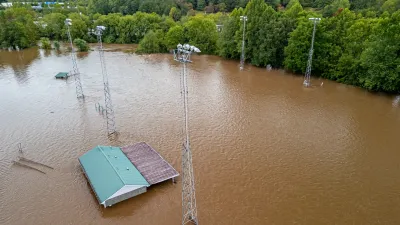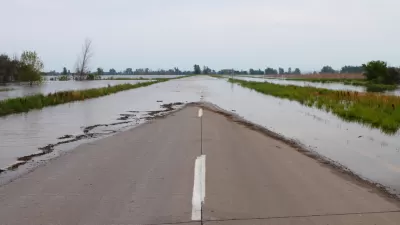One of the odd twists of the Sandy aftermath is the repurposing of the Occupy Wall Street apparatus as one of the most effective aid groups operating in New York. Could their work serve as a model for locally-based disaster recovery?

Alan Feuer reports on Occupy Sandy's efforts to help those in need of assistance following the Superstorm of two weeks ago. The organization has used the tools of social media and organization developed during the Occupy Wall Street movement to create an ad hoc, but effective relief group that, at times, has outperformed the "official" response from public agencies and non-profits like the Red Cross.
"Maligned for months for its purported ineffectiveness, Occupy Wall Street has managed through its storm-related efforts not only to renew the impromptu passions of Zuccotti, but also to tap into an unfulfilled desire among the residents of the city to assist in the recovery," says Feuer. "This altruistic urge was initially unmet by larger, more established charity groups, which seemed slow to deliver aid and turned away potential volunteers in droves during the early days of the disaster."
"In the past two weeks, Occupy Sandy has set up distribution sites at a pair of Brooklyn churches where hundreds of New Yorkers muster daily to cook hot meals for the afflicted and to sort through a medieval marketplace of donated blankets, clothes and food. There is an Occupy motor pool of borrowed cars and pickup trucks that ferries volunteers to ravaged areas. An Occupy weatherman sits at his computer and issues regular forecasts. Occupy construction teams and medical committees have been formed."
FULL STORY: Occupy Sandy: A Movement Moves to Relief

Maui's Vacation Rental Debate Turns Ugly
Verbal attacks, misinformation campaigns and fistfights plague a high-stakes debate to convert thousands of vacation rentals into long-term housing.

Planetizen Federal Action Tracker
A weekly monitor of how Trump’s orders and actions are impacting planners and planning in America.

In Urban Planning, AI Prompting Could be the New Design Thinking
Creativity has long been key to great urban design. What if we see AI as our new creative partner?

King County Supportive Housing Program Offers Hope for Unhoused Residents
The county is taking a ‘Housing First’ approach that prioritizes getting people into housing, then offering wraparound supportive services.

Researchers Use AI to Get Clearer Picture of US Housing
Analysts are using artificial intelligence to supercharge their research by allowing them to comb through data faster. Though these AI tools can be error prone, they save time and housing researchers are optimistic about the future.

Making Shared Micromobility More Inclusive
Cities and shared mobility system operators can do more to include people with disabilities in planning and operations, per a new report.
Urban Design for Planners 1: Software Tools
This six-course series explores essential urban design concepts using open source software and equips planners with the tools they need to participate fully in the urban design process.
Planning for Universal Design
Learn the tools for implementing Universal Design in planning regulations.
planning NEXT
Appalachian Highlands Housing Partners
Mpact (founded as Rail~Volution)
City of Camden Redevelopment Agency
City of Astoria
City of Portland
City of Laramie




























